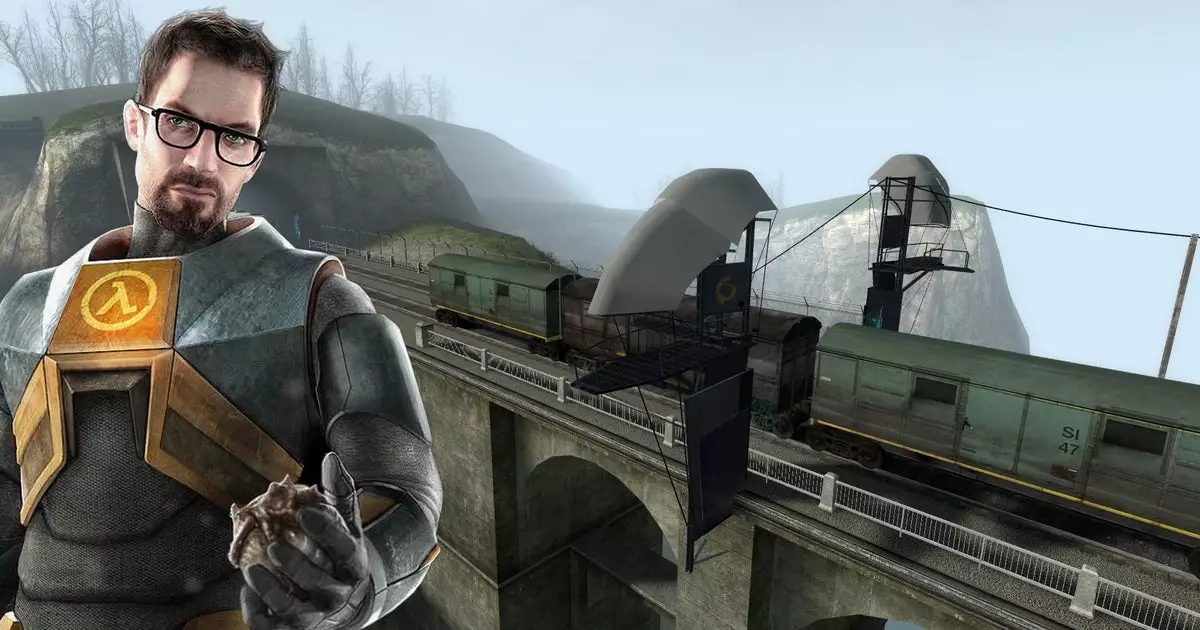In the ever-evolving landscape of video gaming, few titles manage to leave a lasting legacy quite like Valve’s *Half-Life 2*. Released in 2004, the game set new standards for narrative depth, environmental design, and gameplay mechanics. Yet, it is not merely nostalgia that keeps the game relevant; it is the ongoing commitment from Valve to refine and tweak the experience, even decades after its initial launch. The recent update, though minor in scope, exemplifies this dedication, illustrating how small, thoughtful changes serve to rekindle the original magic and challenge players anew.
This specific patch, aimed primarily at restoring a train’s speed in the “Highway 17” level, underscores the importance of attentiveness to detail in game design. Just a slight adjustment to the train’s velocity transforms the gameplay experience—allowing players to once again challenge the game’s perceived difficulty and reclaim a sense of mastery lost over the years. Such updates remind us that games are not static artifacts but living entities that benefit from continuous tuning, embracing their history while adapting to the present.
The Significance Beyond the Surface
While many might dismiss these minor fixes as trivial or mere housekeeping, they carry a deeper significance. They demonstrate a respect for the player base and the game’s fundamental design integrity. For nearly two decades, players have been taught that dodging the train was impossible or, at best, a reverse-engineered workaround. But the recent tweak boldly states: “You were always meant to beat this train.” It’s a philosophical statement that challenges assumptions and invites players to revisit their skills, beliefs, and perhaps even their patience.
Moreover, these updates serve as a form of gameplay preservation. In the age of remakes, remasters, and graphical overhauls, behind-the-scenes adjustments often go unnoticed but are crucial for the longevity of classic titles. They keep the experience authentic, true to its original vision, while subtly correcting legacy issues that may hinder modern play. When Valve removes invisible walls to facilitate speedrunning or fixes collision issues, it demonstrates an understanding that *Half-Life 2* remains a competitive arena—albeit in a different sense—about mastery, innovation, and community.
The Dedication of the Hidden Craftsmen
Imagining a dedicated “caretaker” at Valve, tirelessly fixing an invisible wall here or adjusting collision physics there, might seem quaint or even humorous. However, it embodies a broader philosophy of craftsmanship that is rare in the commercial gaming industry. Most large developers focus on new projects, sequels, or technological advancements. Yet, Valve’s persistence with *Half-Life 2* exemplifies a genuine commitment to its long-term cultural and historical significance.
This can be seen as a form of artisanal care—meticulous, sometimes obsessive, but ultimately respectful of the audience and the game itself. Like a conservator restoring a beloved artwork, Valve’s team ensures that every tweak preserves the integrity of the original while enhancing the player experience. It’s an acknowledgment that gaming history is fragile, and that even twenty-year-old code deserves careful stewardship.
Beyond the Obvious: A Statement of Values
In the broader context, these small updates reveal a core value: that quality and dedication matter, regardless of commercial pressures. It champions a philosophy that values the legacy of games not just as relics but as ongoing projects that can be refined and improved upon. For players who experienced *Half-Life 2* in its earliest days, these updates are a celebration—a validation of their continued engagement and an invitation to revisit the past with fresh eyes.
The act of tweaking a train’s velocity or fixing a collision might seem insignificant on paper, but in reality, it is emblematic of a larger principle. It shows that the developers care, that they respect the game’s history enough to keep it alive, vibrant, and relevant. It’s a powerful reminder that even in a fast-paced industry obsessed with the next big thing, there is still room for reverence, patience, and subtle craftsmanship.
### Final Thoughts
These incremental updates serve as a testament to the enduring legacy of *Half-Life 2*, elevating it from a bygone blockbuster to a living monument of game design. They challenge our assumptions about innovation, showing that sometimes, the greatest progress is made through patience, precision, and respect for the details. Valve’s ongoing stewardship of this classic underscores a vital truth: that true mastery of art—whether in games or elsewhere—lies in care, dedication, and the relentless pursuit of perfection, no matter how small the fix.

